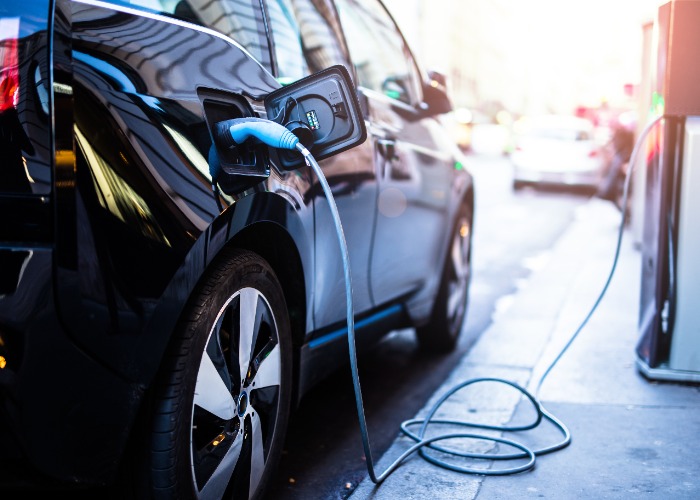Guide to buying a second-hand electric car

Specialist motoring site Move Electric reveals its top tips on how to buy a used electric car.
Electric cars don't come cheap, and not everyone has the finances available to buy a new model right off the showroom floor.
That's why a used car could make a lot more sense for many motorists.
The upfront cost is obviously far lower and the car is likely to depreciate at a slower rate than a brand new motor.
But what should you be looking out for when shopping around for a used EV? We've put together this guide to help you navigate your way to a tax-friendly, low-emission vehicle.
Where to charge your electric car for free
What's your weekly mileage?
Data from motoring site RAC shows the majority of electric car owners drive no more than 180 miles per week.
While that's well within the grasp of newer electric cars, early models have smaller batteries and a range closer to 100 miles, so you'll have to plan to recharge at least twice a week.
Get breakdown cover from £6 a month with the AA
Don't discount high-mileage cars
Because EVs have fewer moving parts and no oil changes, there's less to go wrong.
So don't simply assume a high-mileage EV is destined to cause no end of troubles and have a terrible range.
For example, there are some Tesla Model S cars with more than 160,000 miles under their wheels and with more than 80% of their battery capacity remaining.
Will you pay extra for the battery?
You might expect that all EVs include a battery as part of the deal. That's not the case for some early iterations of the Renault Zoe and Nissan Leaf.
You have to pay around £60 per month to lease it, depending on your mileage. Make sure you know the position with your EV.
Electric cars: key manufacturers in the race to be world number one
Where to buy and what to look out for
Ideally, you should aim to buy from either a main dealer representing the brand or from an established specialist.
A private sale is fine provided you go with someone who knows a bit about EVs.
Service history
A main dealer service history is desirable because you can be sure all the important software updates have been performed and valuable because maintaining it will boost the car's value at resale time.
If there are some independent service stamps, check the garage is an EV specialist or member of Hevra, a network of qualified EV technicians who share information on faults and fixes.
Battery health
Ensure the charging ports aren't damaged and that the battery can be charged using both the official Type 2 charger and three-pin charging cables supplied.
There are isolated stories of cheap, aftermarket cables catching fire. Insist the battery is fully charged and to confirm, check the cell count on the car's display and the battery's stated range.
Warranty
An EV typically has two warranties: one for the car itself, which is typically three years and another for the battery (eight years) that pays out should it degrade substantially (66% in the Renault Zoe's case).
Tyres
Check these are EV-specific because their harder compound reduces rolling resistance and increases range while extending the tyre's life.
Warning lights
A dealer that's willing to sell a car with a warning light on is probably one to be avoided.
Air-con
This not only keeps the cabin cool but on some EVs it also cools the batteries, so any fault here can slow down charging and reduce power and range.
Modern EVs also reverse the air-con system, using it as an air-source heat pump to warm the cabin, so check this feature works.
Lights
Most EV lights are LEDs that are sensitive to water ingress, so check the lens isn't cracked and that there's no condensation inside the units long after they've been switched off. Replacements are very expensive.
Brakes
Thanks to an EV's energy recuperation system, its brakes have an easy life. One negative side effect is that, with lack of use, they can corrode.
On the other hand, heavily worn brake discs suggest the car has been driven rather too... 'enthusiastically'.
Suspension
On the test drive, feel for looseness and listen for underbody rattles and bangs from dampers, bushes and springs.
General checks
Some electric cars use lightweight materials that can be difficult and costly to repair so make sure the body panels aren't seriously marked.
It's worth checking for damage on both the body and the underside - especially the battery cover - for scrapes and graunching.
Car history and outstanding finance
Check the mileage, provenance and whether it has outstanding finance recorded against it, and if it has been stolen or written off.
The cheapest places to charge your electric car
This article originally appeared on Move Electric and can be viewed here.
*This article contains affiliate links, which means we may receive a commission on any sales of products or services we write about. This article was written completely independently.
Most Recent
Comments
Be the first to comment
Do you want to comment on this article? You need to be signed in for this feature








